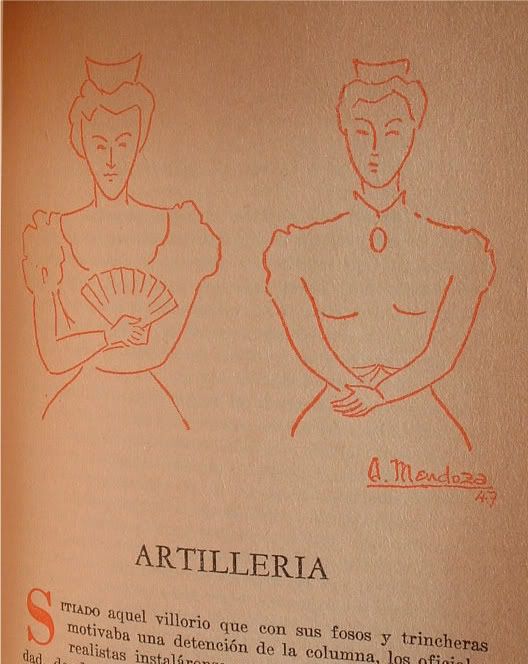 Sometimes I think Lugones is being a bit funny with the names. For example, this story does have an artillery piece, but the story seems to revolve more around one character: a wealthy and beautiful spinster. The woman in question has remained a spinster because she is a mulatto and therefore socially marginal. She does take up the patriot cause and even sends her slaves to fight alongside the montoneros.
Sometimes I think Lugones is being a bit funny with the names. For example, this story does have an artillery piece, but the story seems to revolve more around one character: a wealthy and beautiful spinster. The woman in question has remained a spinster because she is a mulatto and therefore socially marginal. She does take up the patriot cause and even sends her slaves to fight alongside the montoneros.Another way in which she serves the cause of independence is by throwing parties at her estate for the Spanish forces, thereby getting them all worn out and hungover before they have to fight the montoneros. This does raise some doubt on the part of the gauchos as to where her loyalties lie, but she comes through for them by providing metal to forge cannonballs for their artillery piece.
There's a curious sort of parallel at work in the story. The story introduces two spinster sisters but then goes on only to involve one of them. Similarly, the story introduces two artillery pieces, but one is quickly destroyed, leaving only one in the story. I'm not entirely sure what to make of it.
Perhaps the most curious element in the story (at least to me) is that of race. Lugones really plays up the sort of seductive otherness of the woman when discussing her parties meant to distract the royalists in a way that now would seem dated. And yet, she does come off as a heroic figure. Overall, a little hard to gague whether its racial politics are painfully dated or intriguingly ambiguous. It does make me more curious as to the history of people of African ancestry in Argentina.



No comments:
Post a Comment